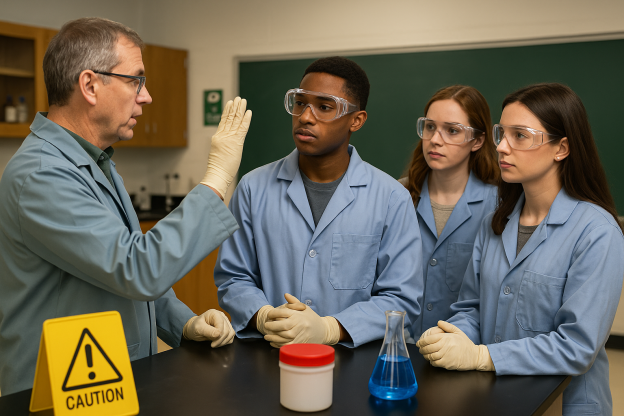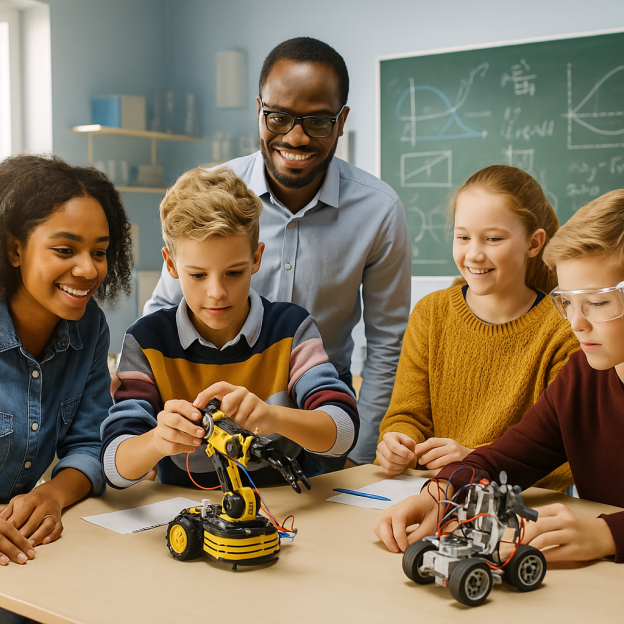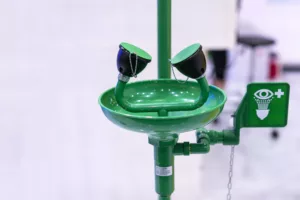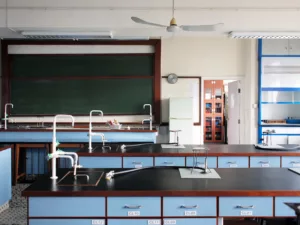How adaptive planning, clear protocols, and specialized training create safer learning spaces for students who face mobility, sensory, or behavioral challenges.
Creating a safe learning environment is a fundamental responsibility for every school. While absolute safety is never guaranteed, proactive planning and well-designed controls significantly reduce risks—especially for students with additional needs. These learners often navigate mobility, sensory, cognitive, or behavioral challenges, making inclusive, well-structured safety systems essential. When safety is prioritized, students can focus on academic growth without fear or uncertainty overshadowing the school day.
Why Safety Planning Must Be Inclusive
Accidents can happen in any setting, but structured processes—such as clear communication, effective supervision, and thoughtful environmental design—lower the chances of harm. For students with additional needs, safety requires a lens that extends beyond general procedures. Schools must consider:
-
Mobility limitations
-
Visual or auditory impairments
-
Cognitive or processing challenges
-
Behavioral and emotional needs
-
Alternative communication methods
By integrating these considerations into every safety plan, schools ensure that emergency preparedness, daily routines, and instructional environments support all learners.
Core Strategies for Supporting Students With Additional Needs
✅ 1. Continuous, Discipline-Specific Training
Training cannot be a once-a-year checklist. Educators, staff, and students benefit from ongoing professional learning that includes:
-
Emergency response and evacuation procedures
-
Scenario-based drills involving students with additional needs
-
Conflict resolution and de-escalation strategies
-
Duty-of-care responsibilities in labs, CTE spaces, and high-risk environments
Regular refreshers ensure staff are confident, competent, and compliant with best practices.
✅ 2. Clear Protocols, Communication, and Supervision
Students are safer when expectations are well communicated and consistently reinforced. Effective systems include:
-
Written, accessible safety procedures
-
Predictable routines and structured transitions
-
Open-door policies for reporting hazards or concerns
-
Active supervision, especially in high-traffic or high-risk areas
Clarity builds confidence—for both students and staff.
✅ 3. Adaptive and Accessible Learning Environments
Physical layout plays a major role in reducing hazards. Schools should modify environments to support mobility, visibility, and sensory needs:
-
Adjustable-height workstations
-
Clearly marked pathways free of obstructions
-
Visual and tactile signage
-
Specialized seating, tools, or assistive devices
-
Noise-reducing strategies for sensory-sensitive learners
An accessible environment is a safer environment.
✅ 4. Behavioral and Emotional Supports That Reduce Risk
Emotional regulation and positive behavior support are critical safety components. Schools can strengthen their approach by incorporating:
-
Behavior intervention and management plans
-
Access to counseling and mental-health supports
-
Quiet rooms or sensory-friendly spaces for de-escalation
-
Team-based communication between teachers, counselors, and families
A regulated student is a safer student.
✅ 5. Collaboration With Families and Specialists
Families, therapists, and special education teams provide essential insight into each student’s needs. Effective collaboration aligns school practices with home routines and clinical recommendations.
This team-based approach builds comprehensive, individualized safety plans that support consistency across environments.
Safety in Labs, Makerspaces, and Technical Classrooms
Science labs, CTE shops, and makerspaces require enhanced precautions due to chemicals, equipment, and specialized tools. For students with additional needs:
✅ Environmental and Equipment Modifications
-
Wheelchair-accessible fume hoods
-
Height-adjustable lab surfaces
-
Adaptive grip tools and oversized controls
-
Clear floor space for maneuverability
-
Labeled storage with high-contrast or tactile indicators
✅ Controlled Hazard Zones
-
Designated storage for backpacks and personal items
-
Clutter-free aisles and exit pathways
-
Easy access to eyewash stations, safety showers, and emergency stops
✅ Instructor Duty of Care
Teachers must regularly assess risks, modify activities, and provide oversight aligned with the hierarchy of controls. This includes eliminating unnecessary hazards, substituting safer materials when possible, and ensuring PPE is worn correctly.
Emergency Preparedness for All Learners
Emergency planning must be inclusive from the start—not adapted after the fact.
✅ Inclusive Strategies Include:
-
Evacuation plans that assign trained staff to assist specific students
-
Ramps, elevators, and accessible exit routes
-
Braille and large-print evacuation maps
-
Alternative communication tools for students with hearing or speech challenges
-
Safe zones and personalized emergency action plans
Drills should evaluate how effectively the school supports students with additional needs, not just how quickly the class exits.
Safe and Accessible School Transportation
Safety continues beyond the classroom. Transportation plans must ensure secure, accessible travel for students with disabilities.
Key considerations include:
-
Wheelchair lifts, securement systems, and safety harnesses
-
Trained bus drivers and aides
-
Communication boards or assistive devices for nonverbal students
-
Emergency procedures tailored to mobility or sensory needs
Field trips and extracurricular travel require the same level of planning and oversight.
Reducing Environmental Hazards Across Campus
Small changes can prevent significant accidents. Schools should regularly evaluate:
-
Lighting quality in hallways and classrooms
-
Slip-resistant flooring
-
Noise levels and acoustics
-
Hallway clutter and traffic flow
-
Classroom layouts
These environmental improvements support safer movement and clearer communication for all learners.
Building a Culture of Safety
A strong safety culture extends beyond rules and checklists. It requires shared responsibility, routine self-assessment, and continuous improvement.
Schools strengthen that culture when they:
-
Embed safety conversations into daily routines
-
Encourage reporting without fear
-
Update safety policies regularly
-
Reinforce compliance across all staff roles
-
Prioritize risk mitigation through design, training, and communication
When safety becomes part of the school’s identity, every student benefits.
A Safer Path Forward for All Learners
Students with additional needs thrive in environments built with intention, foresight, and compassion. By adopting adaptive strategies, strengthening protocols, and embracing inclusive design, schools create learning spaces where every student—regardless of ability—can participate fully and confidently.
A proactive, student-centered safety approach doesn’t just protect students with additional needs.
It protects the entire school community.













